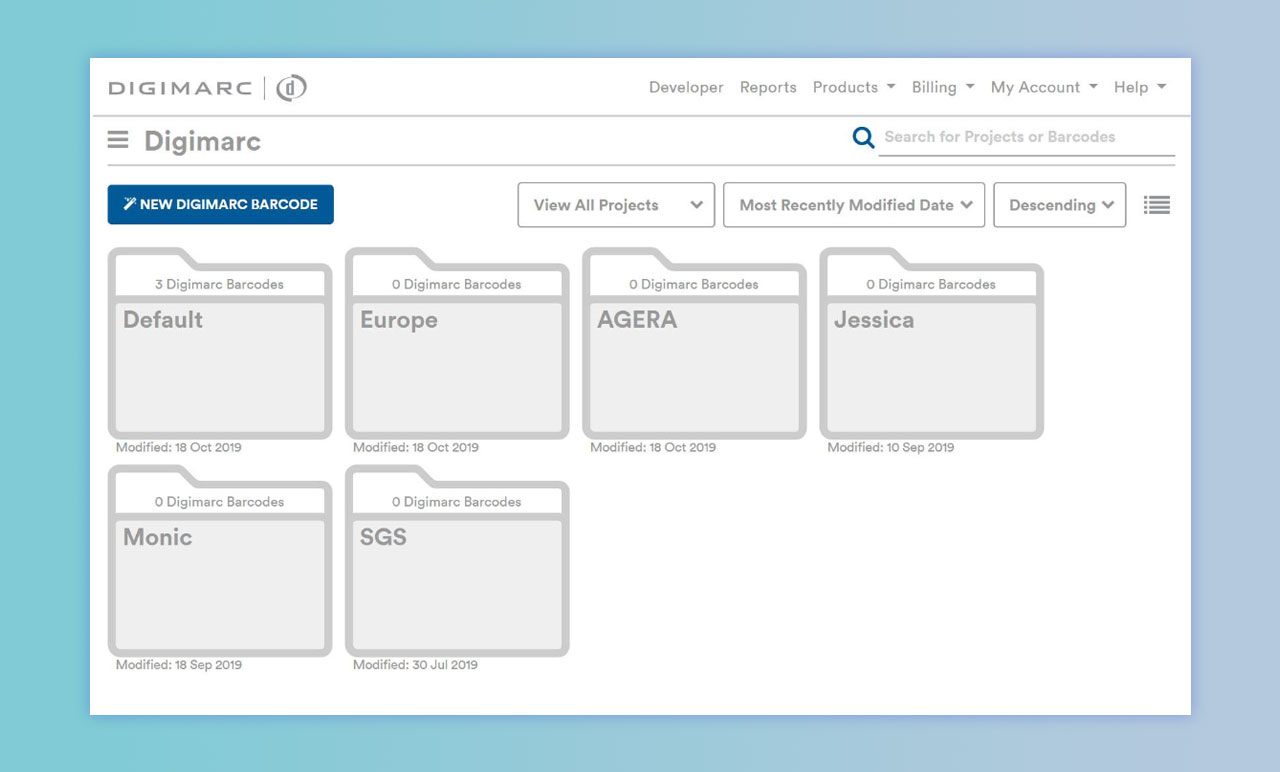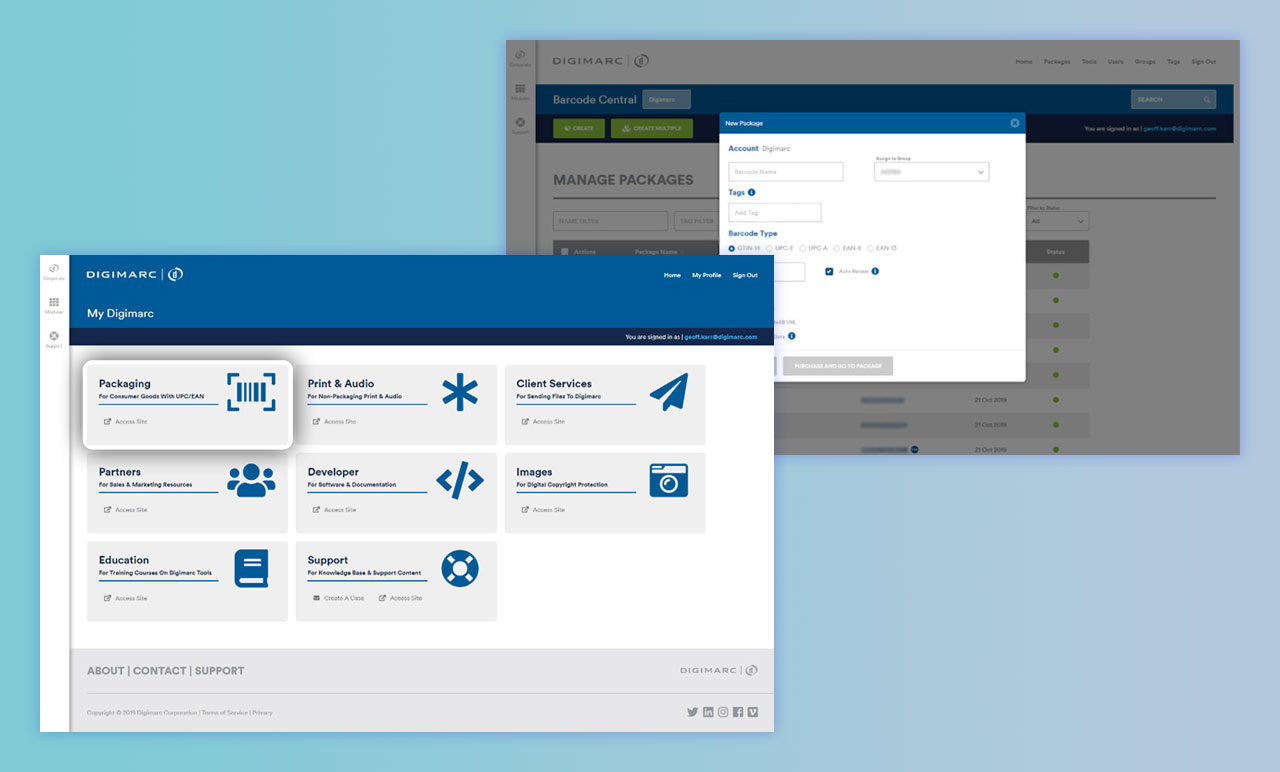A Targeted CX
TL;DR // Results
I redefined Digimarc's flagship product around researched end-user personas, flipping the script to build tools in a user-centered way instead of based on engineering/legal/executive opinions.
- Sliced off functionality from a bloated proof-of-concept portal and reduced complexity and revamped the organizational structuring of the site to be more in line with the target audience.
- Reduced duplicate company account creations to ZERO from as high as 60 accounts for 1 company
- Developed personas by interviewing users directly, and then simplified features in various tools so that each persona only had to learn UI relevant to their specific tasks.
Acting as the organization's first specialized UX designer I crossed from the marketing department into product to help improve onboarding and to structure our product around integrating into existing end-user workflows instead of adding friction by ignoring them.
The Problem
As Digimarc transitioned from an IP licensing company to a product company, the engineering and product teams had a tendency to bolt new features and experimental ideas onto existing products and infrastructure. In a practical sense this meant we had a quick proof-of-concept, but often this left a lot to be desired when it came to actual implementation within customer's existing and well established workflows.
Engineering teams would also oddly cherry pick what services to include or exclude, so eventually when a user would click to "create new" the system was pretty vague about what exactly would be created.
The tool was originally created with magazine publishers in mind, with a folder structure meant to represent "May issue" vs "June Issue," a system that did not suit Digimarc's pivot to the consumer packaged goods vertical several years later.
Here's a look at the tool before I got to it:

The Fix
As the company shifted focus to the consumer packaged goods (CPG) market, I led the effort to deprioritize legacy sectors and restructured workflows to better support high-profile CPG clients. Unlike our previous open-access model, CPG clients required strict permission rules and a curated onboarding experience.
The mismatch between open sign-ups and restricted features led to confusion, duplicate accounts, and production errors. This was exacerbated as walk-up business value began to decline. I partnered with engineering and product to fix this, introducing audience-specific workflows and white-glove onboarding for key clients. Users were invited into focused environments, guided by customer success, and shown only the tools relevant to their needs.
We also replaced rigid folder-based organization with flexible tagging, aligning better with how CPG users sorted product data. The new audience-specific workflows made sure that when users created new items, all the settings were preset to the correct values ensuring they didn't stumble into costly production errors.
Research also revealed two distinct user personas. For example, watermarking was only used by prepress teams, not by admins, so we removed that from the backend UI and handled it through an Adobe Illustrator plug-in to streamline work for both personas in their existing workflows.

Impact
Separating our products into workflows that focused on their individual target audiences allowed us to focus our resources on the user base of our choosing, rather than having to put resources into making sure that changes to one product didn't impact the others. When we had our site set up to "serve everyone" - in the markets we were engaged in, this made production times too slow, so we weren't actually serving anyone very well.
We also began treating our customers in a way that is more in line with expectations for enterprise software. White glove onboarding is the norm in that space, not the walk up and create your own account experience more common with consumer facing software for individuals that we had previously been allowing.